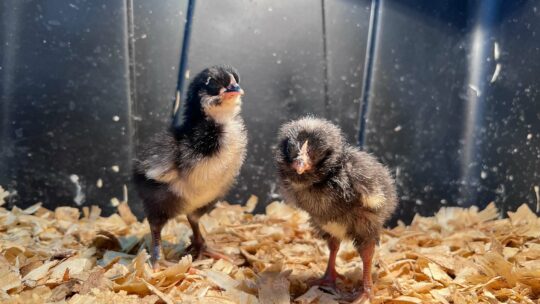In this Backyard Life video, hunting and homesteading pro Daniel Arms shares tips and techniques on selecting and placing game cameras.
While first-generation game cameras utilized traditional film, today’s game cameras are digtal, and powered by either small batteries (single-use and/or rechargeable) or solar panels.
Wildlife Camera Types
- As their name implies, cellular game cameras run on cell service. Although you’ll have to pay for cell service, photos are captured and stored on your cell phone.
- Non-cellular game cameras capture and store photos on an internal SD card.
Pros and Cons of Cellular and Non-Cellular Game Cameras
Cellular and non-cellular game cameras have their own unique applications, and choosing between the two is generally a matter of preference based on what they’ll be used for and how far away you are from your hunting grounds. Cellular versions generally cost a little more (including subscription fees), but are good for security on your property.
- For deer feeder surveillance, Arms prefers utilizing non-cellular wildlife cameras. (Mainly so his cell phone’s not inundated with countless photos every night.)
- For more remote areas such as bedding area edges, trails, or travel corridor, Arms prefers to use cellular cameras because the deer aren’t going to spend as much time standing in front of those cameras. (If he were to use non-cellular cameras in these areas, he’d have to go back and check the SD cards weekly.)
Baiting Game Cameras
Baiting regulations vary by state or county, so be sure to check with your local authorities. If you’re on private land, you can bait deer all year round. Some states allow out-of-season baiting (so many days before or after deer season), but you can’t bait during the season.
Arms use a variety of baits to draw deer to his wildlife cams:
- Corn, or a corn/soybean mixture
- Hanging molasses blocks (available in a variety of flavors)
- Rice bran powder
- Alfalfa pellets (particularly in drought conditions)
Setting Up Game Cameras
Arms sets his wildlife cameras up in a number of different ways:
- Non-cellular camera strapped to a tree near a deer feeder
- Cellular camera affixed to an electric fence post deep in the woods, or to a t-post on your home/property fencing
Note: There are various mount brands that can be used to protect your camera from bears and other animals.
If you maintain and/or create trails that deer will follow to the feeders, try to find their travel corridors and then build a trail that opens up close to their natural paths, as well as leave high and natural brush for them to hide in.
Arms likens deer and turkey to water, noting that they’ll take the path of least resistance. You can lay trees down to funnel them down a trail where you have a camera set up. It’s always a good idea to move your cameras around to capture various pictures and backdrops. By moving a camera 100 yards in any direction, you can detect a buck that you didn’t see in the previous location.
Check out Arms’ previous gate install video to see how he positioned a cellular game camera in a tree adjacent to the gate to capture photos of folks approaching it. (Delivery people oftentimes leave packages behind the Arms’ gate, so the camera provides photographic proof if one was to come up missing.)



